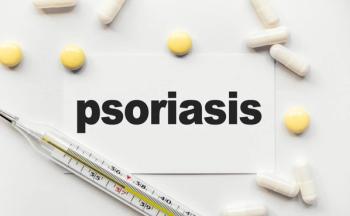
Identifying Early Predictors of Epilepsy After Encephalitis in Children
Echocardiogram and clinical features help researchers identify epilepsy after encephalitis in children.
Early prediction of
“In this study, 46 of the 255 children with encephalitis were diagnosed with postencephalitis epilepsy; that is, the incidence was 18.04%, which is consistent with the previously reported incidence,” wrote the researchers of the study.
The single center retrospective study is published in
Encephalitis is an infectious disease that affects the central nervous system and can result in seizures. Although most patients with encephalitis can control their seizures with treatment, some patients continue to have seizures after the cure of encephalitis, requiring long-term use of antiepileptic drugs to control.
EEG is an important tool in the diagnoses of epilepsy, determining seizure type, and determining epilepsy syndrome. The study aimed to evaluate an early prediction model of epilepsy after encephalitis in childhood based on echocardiogram (ECG) slow wave/fast wave frequency and clinical features.
From May 2019 to December 2021, the researchers enrolled a total of 255 children with encephalitis at the Second Affiliated Hospital of Nantong University who were aged 3 to 12 years. Eligibility criteria included having epilepsy in the acute stage of encephalitis and follow-up for at least 1 year after discharge.
Exclusion criteria were complications with malignant tumor, chronic infectious diseases, heart disease, autoimmune disease; sever liver and kidney dysfunction; history of epilepsy; loss of connection or death at follow-up; incomplete clinical data, unsigned informed consent.
Patients were randomly divided into training and verification sets, as well as the presence of postencephalitic epilepsy (PE) and no postencephalitic (no-PE) depending on whether epilepsy occurred 1 year after discharge. In the data analysis, the researchers used univariate and multivariate logistic regression to create a prediction model in the training set and evaluated the performance of the model in the diagnosis of epilepsy in patients with cognitive functions.
Of these patients, there were 184 in the training set and 71 in the verification set. Additionally, 209 patients were in the non-PE group and 46 patients in the PE group.
The significant findings found showed that hemoglobin (OR, 0.97; 95% CI, 0.95-0.96), epilepsy frequency (OR, 0.97; 95% CI, 0.95-0.96), and ECG slow wave/fast wave frequency in the occipital region were independent influencing actors for PE (P < .05).
The prediction model is based on the above factors: -0.031 × hemoglobin -2.113 × epilepsy frequency + 7.836 × occipital region S/F + 1.595.
Furthermore, the areas under the receiver operating characteristic curve for the diagnosis of PE in the training set and the validation set were 0.835 and 0.712, respectively.
The researchers acknowledge some limitations to the study, including being in a single center, had a low sample size, and was restricted by regional location.
Despite these limitations, the researchers believe these findings suggest the sensitivity and specificity of the PE prediction model was high. Furthermore, the study suggests that blood hemoglobin, the number of epileptic seizures in the acute stage of encephalitis, and EEG slow wave/fast wave frequencies can be used as predictors for seizures in children with epilepsy after encephalitis.
Reference
Sun X, Zhao J, Guo C, Zhu X. Early prediction of epilepsy after encephalitis in childhood based on EEG and clinical features. Emerg Med Int. 2023;2023:8862598. doi:10.1155/2023/8862598
Newsletter
Stay ahead of policy, cost, and value—subscribe to AJMC for expert insights at the intersection of clinical care and health economics.







































